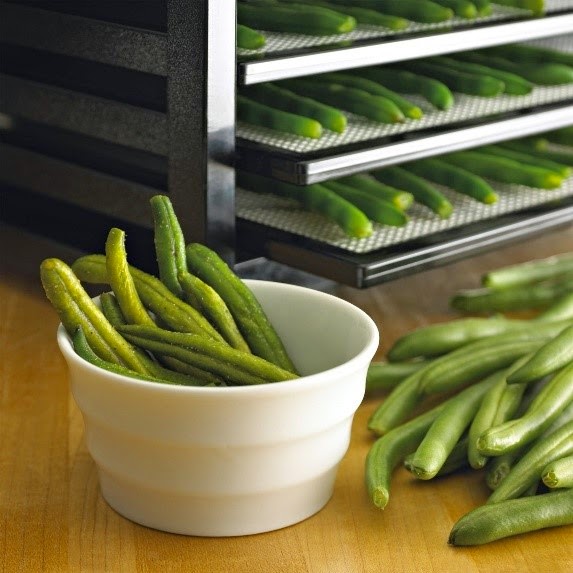Choosing Your Food Dehydrator
Drying food to preserve it is child’s play in some climates,
if you live in a land awash with eternal sunshine then a food dehydrator is
probably at the bottom of your Christmas wish list, who needs one when your
harvest can be dried and preserved as nature intended, laying out your
precious harvest under the sun is the most natural dehydration method
in the world. Fact is, we’re not all lucky enough to live where the sun happily
shines upon us - day in day out, so for the rest of us (plus
those who like to be in complete control of such matters), a food dehydrator
can be a God-send.
An electric food dehydrator is now a very popular addition
to many a kitchens gadget collection, not only is dehydration a fantastic way
to preserve food, it’s also becoming increasingly popular for campers and
hikers who can carry a plentiful supply of meals in their backpacks . . . you
know the sort of thing, just add boiling water, give it a stir, hang on for a
minute or two and you’re ready to enjoy a steaming bowl of something hot,
nutritious and delicious.
So how do you go about choosing a food dehydrator? How do
you weigh up the pro’s and con’s? As with everything technical there are plenty
of different models of food dehydrator to choose from – how do you know which
is the best food dehydrator for you?
Food Dehydrator Facts
The art of food dehydration is not rocket science, people
have been doing it naturally for generations using nothing more than a wooden
pallet and a whole heap of sunshine. All a food dehydrator really needs to do
is to successfully maintain a constant air flow and constant temperature . . .
and that’s it! The main factors to consider when choosing a food dehydrator
are;
Heat and air flow – an essential part of the process
Access – accessibility is always important
Versatility
Materials & Quality – you want to make sure that your
food dehydrator is good quality, that way it will dehydrate your harvest for
many years to come
When you start looking for a food dehydrator you’ll soon
notice that they are available in two basic designs;
1.Stackable trays
2. Shelf trays
Each type of food dehydrator has benefits and disadvantages,
okay, I notice that you’re getting even more confused but don’t be, just keep
reading.
Choosing a Food Dehydrator
Food Dehydrator – Heat And Air Flow – the food
dehydrator you choose must have even heat and air flow. It can be so
frustrating if half of your food is much drier than the other half, and if the
heat and air flow is not even then it could mean that the food which is stored
closest to the heat and air flow will dry out much faster than the rest. You
really need the heat and air flow to be nice and even throughout your food
dehydrator. Shelf tray dehydrators usually have heat and air flow which is nice
and even due to the basic nature of the design, uneven heat and air flow is a
more common problem in the cheaper, economy end stackable food dehydrators.
Food Dehydrator – Access – you really do need to think
about how easy it is to access the trays in your food dehydrator. You’ve gotten’
have good access when you’re preparing your food for dehydration, as well as
keeping an eye on it whilst food dehydration is in progress. Shelf food
dehydrators are fantastic for ease of access, you can simply pull out whichever
tray you wish to check on – stackable dehydrators, however, are not so easy. If
you want to check up on a tray which is in the center or bottom of the stack
then you’ve got to lift out all of the other trays to get to it.
Food Dehydrator – Versatility – if you think that you
might want to dehydrate tall things then think about a shelf tray dehydrator –
you can simply leave out a few of the trays so you have as much clearance as
you need. This can be great for people who want to use their food dehydrator
for crafts, dried flowers etc.
Food Dehydrator – Materials & Quality – you really
want your food dehydrator to last, so it’s important that you check out the
quality of the materials and workmanship in your food dehydrator. A well-built,
quality food dehydrator will more than pay for itself after providing you with
dried foods over many years.
